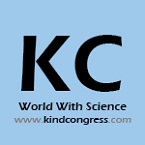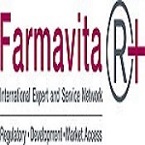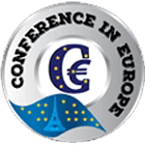Session/Tracks
Physical Chemistry Conferences | Theoretical Chemistry Conferences | Chemistry Conferences 2023
Track 1: Theoretical and Computational Chemistry
Theoretical chemistry is the discipline that uses quantum mechanics, classical mechanics, and statistical mechanics to explain the structures and dynamics of chemical systems and to correlate, understand, and predict their thermodynamic and kinetic properties. Modern theoretical chemistry may be roughly divided into the study of chemical structure and the study of chemical dynamics. The former includes studies of: (a) electronic structure, potential energy surfaces, and force fields; (b) vibrational-rotational motion; and (c) equilibrium properties of condensed-phase systems and macro-molecules. Chemical dynamics includes: (a) bimolecular kinetics and the collision theory of reactions and energy transfer; (b) unimolecular rate theory and metastable states; and (c) condensed-phase and macromolecular aspects of dynamics.
Related Societies:
Europe: International Association of Physical Chemists, European Association for Chemical and Molecular Sciences, Croatian Chemical Society, Danish Chemical Society, French Chemical Society, German Chemical Society
USA: The Electrochemical Society, Society of Applied Spectroscopy, The Society of Rheology, Asociacion Argentina de Ingenieria Quimica, Associacao Brasileira de Engenharia Quimica – ABEQ, Instituto Mexicano de Ingenieros Quimicos, A.C. (IMIQ), Sociedad Mexicana de Electroquimica (SME)
Asia-Pacific: Korean Society of Rheology, Saudi Chemical Society, Indian Chemical Society, Korean Chemical Society, Iranian Journal of Chemistry & Chemical Engineering, Philippine Federation of Chemistry Societies
Track 2: Physical Chemistry of Macromolecules
Physical Chemistry of Macromolecules employs the combined principles of physical chemistry to define the behaviour, structure, and intermolecular effects of macromolecules in both solution and bulk states. It emphasizes the statistical measures of structure and weight distribution, and also discusses structural, dynamic, and optical properties of macromolecules in solution.
Related Societies:
Europe: International Association of Physical Chemists, European Association for Chemical and Molecular Sciences, Croatian Chemical Society, Danish Chemical Society, French Chemical Society, German Chemical Society
USA: The Electrochemical Society, Society of Applied Spectroscopy, The Society of Rheology, Asociacion Argentina de Ingenieria Quimica, Associacao Brasileira de Engenharia Quimica – ABEQ, Instituto Mexicano de Ingenieros Quimicos, A.C. (IMIQ), Sociedad Mexicana de Electroquimica (SME)
Asia-Pacific: Korean Society of Rheology, Saudi Chemical Society, Indian Chemical Society, Korean Chemical Society, Iranian Journal of Chemistry & Chemical Engineering, Philippine Federation of Chemistry Societies
Track 3: Chemical Physics
Chemicalphysics is a sub field of chemistry and physics that investigates physicochemical phenomena using techniques from molecular and atomic physics and condensed matter physics; it is the branch of physics that studies chemical processes from the point of perspective of physics. While at the interface of physics and chemistry, chemical physics is distinct from physical chemistry in that it focuses more on the typical elements and theories of physics. Meanwhile, physical chemistry observes the physical nature of chemistry. Nonetheless, the distinction between the two fields is vague, and workers usually practice in both fields during the course of their research.
Related Societies:
Europe: International Association of Physical Chemists, European Association for Chemical and Molecular Sciences, Croatian Chemical Society, Danish Chemical Society, French Chemical Society, German Chemical Society
USA: The Electrochemical Society, Society of Applied Spectroscopy, The Society of Rheology, Asociacion Argentina de Ingenieria Quimica, Associacao Brasileira de Engenharia Quimica – ABEQ, Instituto Mexicano de Ingenieros Quimicos, A.C. (IMIQ), Sociedad Mexicana de Electroquimica (SME)
Asia-Pacific: Korean Society of Rheology, Saudi Chemical Society, Indian Chemical Society, Korean Chemical Society, Iranian Journal of Chemistry & Chemical Engineering, Philippine Federation of Chemistry Societies
Track 4: Chemical Kinetics
Chemistry, by its very nature, is related with change. Substances with well-defined properties are converted by chemical reactions into other substances with distinct properties. For any chemical reaction, chemists try to find out the practicality of a chemical reaction which can be predicted by thermodynamics, extent to which a reaction will continue can be determined from chemical equilibrium and speed of a reaction i.e. time taken by a reaction to reach equilibrium. Along with viability and extent, it is equally important to know the rate and the factors controlling the rate of chemical reaction for its thorough understanding. For example, which parameters determine as to how rapidly food gets spoiled? How to design a rapidly setting material for dental filling? Or what controls the rate at which fuel ignites in an auto engine? All these questions can be answered by the branch of chemistry, which deals with the study of reaction rates and their mechanisms, called chemical kinetics.
Related Societies:
Europe: International Association of Physical Chemists, European Association for Chemical and Molecular Sciences, Croatian Chemical Society, Danish Chemical Society, French Chemical Society, German Chemical Society
USA: The Electrochemical Society, Society of Applied Spectroscopy, The Society of Rheology, Asociacion Argentina de Ingenieria Quimica, Associacao Brasileira de Engenharia Quimica – ABEQ, Instituto Mexicano de Ingenieros Quimicos, A.C. (IMIQ), Sociedad Mexicana de Electroquimica (SME)
Asia-Pacific: Korean Society of Rheology, Saudi Chemical Society, Indian Chemical Society, Korean Chemical Society, Iranian Journal of Chemistry & Chemical Engineering, Philippine Federation of Chemistry Societies
Track 5: Surface Science
Surface science is the study of physical and chemical phenomenon that occur at the interface of two phases, including solid–liquid interfaces, solid–gas interfaces, solid–vacuum interfaces, and liquid–gas interfaces. It includes the fields of surface chemistry and surface physics. Surface chemistry can be roughly defined as the study of chemical reactions at interfaces. It is closely associated to surface engineering, which aims at modifying the chemical composition of a surface by incorporation of selected elements or functional groups that generate various desired effects or improvements in the properties of the surface or interface. Surface science is of specific importance to the fields of heterogeneous catalysis, electrochemistry, and geochemistry.
Related Societies:
Europe: International Association of Physical Chemists, European Association for Chemical and Molecular Sciences, Croatian Chemical Society, Danish Chemical Society, French Chemical Society, German Chemical Society
USA: The Electrochemical Society, Society of Applied Spectroscopy, The Society of Rheology, Asociacion Argentina de Ingenieria Quimica, Associacao Brasileira de Engenharia Quimica – ABEQ, Instituto Mexicano de Ingenieros Quimicos, A.C. (IMIQ), Sociedad Mexicana de Electroquimica (SME)
Asia-Pacific: Korean Society of Rheology, Saudi Chemical Society, Indian Chemical Society, Korean Chemical Society, Iranian Journal of Chemistry & Chemical Engineering, Philippine Federation of Chemistry Societies
Track 6: Spectroscopy
Spectroscopy is study of the absorption and emission of light and other radiation by matter, as related to the dependence of these procedures on the wavelength of the radiation. More recently, the definition has been expanded to include the study of the relations between particles such as electrons, protons, and ions, as well as their interaction with other particles as a role of their collision energy. Spectroscopic analysis has been crucial in the development of the most fundamental hypothesis in physics, including quantum mechanics, the special and general theories of relativity, and quantum electrodynamics. Spectroscopy, as applied to high-energy collisions, has been a key tool in developing scientific consideration not only of the electromagnetic force but also of the strong and weak nuclear forces.
Spectroscopic techniques are exceptionally sensitive. Single atoms and even different isotopes of the same atom can be detected among 1020 or more atoms of a distinct species. Trace amounts of pollutants or contaminants are often detected most effectively by spectroscopic techniques.
Related Societies:
Europe: International Association of Physical Chemists, European Association for Chemical and Molecular Sciences, Croatian Chemical Society, Danish Chemical Society, French Chemical Society, German Chemical Society
USA: The Electrochemical Society, Society of Applied Spectroscopy, The Society of Rheology, Asociacion Argentina de Ingenieria Quimica, Associacao Brasileira de Engenharia Quimica – ABEQ, Instituto Mexicano de Ingenieros Quimicos, A.C. (IMIQ), Sociedad Mexicana de Electroquimica (SME)
Asia-Pacific: Korean Society of Rheology, Saudi Chemical Society, Indian Chemical Society, Korean Chemical Society, Iranian Journal of Chemistry & Chemical Engineering, Philippine Federation of Chemistry Societies
Track 7: Photochemistry
The study of chemical reactions, isomerizations and physical behavior that may occur under the influence of visible and/or ultraviolet light is known as Photochemistry. Photochemistry is the underlying mechanism for all of photobiology. When a molecule absorbs a photon of light, its electronic constitution changes, and it reacts differently with other molecules. The energy that is absorbed from light can effect in photochemical changes in the absorbing molecule, or in an adjacent molecule (e.g., photosensitization). The energy can also be set off as heat, or as lower energy light, i.e., fluorescence or phosphorescence, in order to give back the molecule to its ground state. Each type of molecule has a different preference for which of these different mechanisms it utilizes to get rid of absorbed photon energy, e.g., some prefer fluorescence over chemistry.
Related Societies:
Europe: International Association of Physical Chemists, European Association for Chemical and Molecular Sciences, Croatian Chemical Society, Danish Chemical Society, French Chemical Society, German Chemical Society
USA: The Electrochemical Society, Society of Applied Spectroscopy, The Society of Rheology, Asociacion Argentina de Ingenieria Quimica, Associacao Brasileira de Engenharia Quimica – ABEQ, Instituto Mexicano de Ingenieros Quimicos, A.C. (IMIQ), Sociedad Mexicana de Electroquimica (SME)
Asia-Pacific: Korean Society of Rheology, Saudi Chemical Society, Indian Chemical Society, Korean Chemical Society, Iranian Journal of Chemistry & Chemical Engineering, Philippine Federation of Chemistry Societies
Track 8: Biophysics
Biophysics is the study of physical phenomena and physical processes in living things, on scales spanning molecules, cells, tissues, and organisms. Biophysicists use the principles and methods of physics to understand biological systems. It is an interdisciplinary science, closely related to quantitative and systems biology. Biophysics is the field that applies the theories and methods of physics to understand how biological systems work.
Related Societies:
Europe: International Association of Physical Chemists, European Association for Chemical and Molecular Sciences, Croatian Chemical Society, Danish Chemical Society, French Chemical Society, German Chemical Society
USA: The Electrochemical Society, Society of Applied Spectroscopy, The Society of Rheology, Asociacion Argentina de Ingenieria Quimica, Associacao Brasileira de Engenharia Quimica – ABEQ, Instituto Mexicano de Ingenieros Quimicos, A.C. (IMIQ), Sociedad Mexicana de Electroquimica (SME)
Asia-Pacific: Korean Society of Rheology, Saudi Chemical Society, Indian Chemical Society, Korean Chemical Society, Iranian Journal of Chemistry & Chemical Engineering, Philippine Federation of Chemistry Societies
Track 9: Quantum Chemistry
Quantum chemistry is a field of chemistry whose primary focus is the application of quantum mechanics in physical models and experiments of chemical systems. It is also known as molecular quantum mechanics. Quantum chemistry is the application of quantum mechanical theories and equations to the study of molecules. In order to understand matter at its most fundamental measure, we must utilize quantum mechanical models and methods. There are two aspects of quantum mechanics that make it differ from previous models of matter. The first is the concept of wave-particle duality; that is, the notion that we want to think of very small objects (such as electrons) as having characteristics of both particles and waves. Second, quantum mechanical models precisely predict that the energy of atoms and molecules is always quantized, meaning that they may have only certain amounts of energy. Quantum chemical theories allow us to elucidate the structure of the periodic table, and quantum chemical calculations allow us to accurately predict the structures of molecules and the spectroscopic behaviour of atoms and molecules.
Related Societies:
Europe: International Association of Physical Chemists, European Association for Chemical and Molecular Sciences, Croatian Chemical Society, Danish Chemical Society, French Chemical Society, German Chemical Society
USA: The Electrochemical Society, Society of Applied Spectroscopy, The Society of Rheology, Asociacion Argentina de Ingenieria Quimica, Associacao Brasileira de Engenharia Quimica – ABEQ, Instituto Mexicano de Ingenieros Quimicos, A.C. (IMIQ), Sociedad Mexicana de Electroquimica (SME)
Asia-Pacific: Korean Society of Rheology, Saudi Chemical Society, Indian Chemical Society, Korean Chemical Society, Iranian Journal of Chemistry & Chemical Engineering, Philippine Federation of Chemistry Societies
Track 10: Solid-state Chemistry
Solid-state chemistry, also sometimes mentioned to as materials chemistry, is the study of the synthesis, structure, and properties of solid phase materials, peculiarly, but not necessarily exclusively of, non-molecular solids. Solid-state chemistry continues to play an amplifying role in an astounding array of disciplines. As the discovery of new physical phenomena has often depended on the progression of new materials, the synthesis of new solid-state materials and kinetically solid composites with optimized properties is of central importance. While solid-state materials have historically been developed through high temperature solid-state reactions, generally affording the most thermodynamically stable phases, a variety of techniques have been developed to master the limitations inherent in this traditional approach.
Related Societies:
Europe: International Association of Physical Chemists, European Association for Chemical and Molecular Sciences, Croatian Chemical Society, Danish Chemical Society, French Chemical Society, German Chemical Society
USA: The Electrochemical Society, Society of Applied Spectroscopy, The Society of Rheology, Asociacion Argentina de Ingenieria Quimica, Associacao Brasileira de Engenharia Quimica – ABEQ, Instituto Mexicano de Ingenieros Quimicos, A.C. (IMIQ), Sociedad Mexicana de Electroquimica (SME)
Asia-Pacific: Korean Society of Rheology, Saudi Chemical Society, Indian Chemical Society, Korean Chemical Society, Iranian Journal of Chemistry & Chemical Engineering, Philippine Federation of Chemistry Societies
Track 11: Biophysical Chemistry
Biophysical chemistry is a physical science that uses the concepts of physics and physical chemistry for the study of biological systems. The most common feature of the research in this subject is to seek explanation of the various phenomena in biological systems in terms of either the molecules that make up the system or the supra-molecular structure of these systems. Biophysical chemists employ various techniques used in physical chemistry to probe the structure of biological systems. These techniques include spectroscopic methods such as nuclear magnetic resonance (NMR) and X-ray diffraction.
Related Societies:
Europe: International Association of Physical Chemists, European Association for Chemical and Molecular Sciences, Croatian Chemical Society, Danish Chemical Society, French Chemical Society, German Chemical Society
USA: The Electrochemical Society, Society of Applied Spectroscopy, The Society of Rheology, Asociacion Argentina de Ingenieria Quimica, Associacao Brasileira de Engenharia Quimica – ABEQ, Instituto Mexicano de Ingenieros Quimicos, A.C. (IMIQ), Sociedad Mexicana de Electroquimica (SME)
Asia-Pacific: Korean Society of Rheology, Saudi Chemical Society, Indian Chemical Society, Korean Chemical Society, Iranian Journal of Chemistry & Chemical Engineering, Philippine Federation of Chemistry Societies
Track 12: Electrochemistry
Electrochemistry is the branch of chemistry which deals with the chemical changes caused in the matter by passage of electric current and conversion of chemical energy into electrical energy and vice versa. Electrochemistry deals with the study of electrical properties of solutions of electrolytes and with the interrelation of chemical phenomenon and electrical energies. It is the study of production of electricity from energy released during impulsive chemical reactions and the use of electrical energy to bring about non-spontaneous chemical reactions. Electrochemistry is not only limited up to chemistry but its branches extend to physics and biology also.
Related Societies:
Europe: International Association of Physical Chemists, European Association for Chemical and Molecular Sciences, Croatian Chemical Society, Danish Chemical Society, French Chemical Society, German Chemical Society
USA: The Electrochemical Society, Society of Applied Spectroscopy, The Society of Rheology, Asociacion Argentina de Ingenieria Quimica, Associacao Brasileira de Engenharia Quimica – ABEQ, Instituto Mexicano de Ingenieros Quimicos, A.C. (IMIQ), Sociedad Mexicana de Electroquimica (SME)
Asia-Pacific: Korean Society of Rheology, Saudi Chemical Society, Indian Chemical Society, Korean Chemical Society, Iranian Journal of Chemistry & Chemical Engineering, Philippine Federation of Chemistry Societies
Track 13: Organometallic Chemistry
Organometallic-chemistry is the study of the chemical synthesis, chemical structure and reactivity of chemical combination that carry metal carbon bonds, these compounds are often used as similar catalysts. Organometallic compounds, matter containing one metal to carbon atoms in which the carbon is piece of an organic group. Organometallic compounds played a major part in the development of chemistry structures. The physicochemical characteristics of organometallic compounds are solids, some are liquids and some are gases.
Related Societies:
Europe: International Association of Physical Chemists, European Association for Chemical and Molecular Sciences, Croatian Chemical Society, Danish Chemical Society, French Chemical Society, German Chemical Society
USA: The Electrochemical Society, Society of Applied Spectroscopy, The Society of Rheology, Asociacion Argentina de Ingenieria Quimica, Associacao Brasileira de Engenharia Quimica – ABEQ, Instituto Mexicano de Ingenieros Quimicos, A.C. (IMIQ), Sociedad Mexicana de Electroquimica (SME)
Asia-Pacific: Korean Society of Rheology, Saudi Chemical Society, Indian Chemical Society, Korean Chemical Society, Iranian Journal of Chemistry & Chemical Engineering, Philippine Federation of Chemistry Societies
Track 14: Femtochemistry
Femto Chemistry is the branch of chemistry that study’s chemical reaction on extremely short timescale. To study the act of rearranging of atoms within the molecules to form new molecules.
Related Societies:
Europe: International Association of Physical Chemists, European Association for Chemical and Molecular Sciences, Croatian Chemical Society, Danish Chemical Society, French Chemical Society, German Chemical Society
USA: The Electrochemical Society, Society of Applied Spectroscopy, The Society of Rheology, Asociacion Argentina de Ingenieria Quimica, Associacao Brasileira de Engenharia Quimica – ABEQ, Instituto Mexicano de Ingenieros Quimicos, A.C. (IMIQ), Sociedad Mexicana de Electroquimica (SME)
Asia-Pacific: Korean Society of Rheology, Saudi Chemical Society, Indian Chemical Society, Korean Chemical Society, Iranian Journal of Chemistry & Chemical Engineering, Philippine Federation of Chemistry Societies
Track 15: Solution and Thermodynamics
Thermodynamics is the study of relations between heat, work, temperature, and energy. The most important laws of thermodynamics are the zeroth law of thermodynamics, The first law of thermodynamics, The second law of thermodynamics, The third law of thermodynamics. Thermodynamics applies to a wide variety of topics in both science and engineering. Some of the applications includes Ice cubes in a drink absorb heat from the drink making the drink cooler.
Related Societies:
Europe: International Association of Physical Chemists, European Association for Chemical and Molecular Sciences, Croatian Chemical Society, Danish Chemical Society, French Chemical Society, German Chemical Society
USA: The Electrochemical Society, Society of Applied Spectroscopy, The Society of Rheology, Asociacion Argentina de Ingenieria Quimica, Associacao Brasileira de Engenharia Quimica – ABEQ, Instituto Mexicano de Ingenieros Quimicos, A.C. (IMIQ), Sociedad Mexicana de Electroquimica (SME)
Asia-Pacific: Korean Society of Rheology, Saudi Chemical Society, Indian Chemical Society, Korean Chemical Society, Iranian Journal of Chemistry & Chemical Engineering, Philippine Federation of Chemistry Societies
Track 16: Material Science and Engineering
Material Science and Engineering mainly covers the design and discovery of new materials, particularly solids. Development of new materials and their successive application depends on a fundamental understanding of their molecular structure, relating the structure to material properties, performance, and the bonding between atoms. Some of the applications include Atomic Resolution Microscopy, Biomaterials– Borrowing from Nature, Structural Imaging and Analysis, Difficult Sample Preparation. Materials science is also a crucial part of forensic engineering and failure analysis.
Related Societies:
Europe: International Association of Physical Chemists, European Association for Chemical and Molecular Sciences, Croatian Chemical Society, Danish Chemical Society, French Chemical Society, German Chemical Society
USA: The Electrochemical Society, Society of Applied Spectroscopy, The Society of Rheology, Asociacion Argentina de Ingenieria Quimica, Associacao Brasileira de Engenharia Quimica – ABEQ, Instituto Mexicano de Ingenieros Quimicos, A.C. (IMIQ), Sociedad Mexicana de Electroquimica (SME)
Asia-Pacific: Korean Society of Rheology, Saudi Chemical Society, Indian Chemical Society, Korean Chemical Society, Iranian Journal of Chemistry & Chemical Engineering, Philippine Federation of Chemistry Societies
Track 17: Nanoscience and Nanotechnology
Nanoscience is an Interdisciplinary field refers to the study, manipulation and engineering of matter, particles, and structures on the nanometer scale (one millionth of a millimeter, the scale of atoms and molecules). Some of the important properties of materials, such as the electrical, optical, thermal, and mechanical properties, are determined by the way molecules and atoms assemble on the nanoscale into larger structures. In addition, nanometer size structures these properties often different then on macroscale, because quantum mechanical effects become important. Nanotechnology is the application of nanoscience which leads to the use of new nanomaterials and nanosized components in useful products
Related Societies:
Europe: International Association of Physical Chemists, European Association for Chemical and Molecular Sciences, Croatian Chemical Society, Danish Chemical Society, French Chemical Society, German Chemical Society
USA: The Electrochemical Society, Society of Applied Spectroscopy, The Society of Rheology, Asociacion Argentina de Ingenieria Quimica, Associacao Brasileira de Engenharia Quimica – ABEQ, Instituto Mexicano de Ingenieros Quimicos, A.C. (IMIQ), Sociedad Mexicana de Electroquimica (SME)
Asia-Pacific: Korean Society of Rheology, Saudi Chemical Society, Indian Chemical Society, Korean Chemical Society, Iranian Journal of Chemistry & Chemical Engineering, Philippine Federation of Chemistry Societies
Track 18: Organic-Inorganic Chemistry
Organic chemistry is the study of carbon-containing compounds and inorganic chemistry is the study of the remaining (i.e., not carbon-containing) subset of compounds. Both Organic and Inorganic Chemistry are concerned with properties, Reactions, Structures, and synthesis of various chemicals. Molecules associated with living organisms are organic. These include nucleic acids, fats, sugars, proteins, enzymes, and hydrocarbon fuels. Some of the subfields of Inorganic Chemistry focus on electrical conductivity of inorganic materials
Related Societies:
Europe: International Association of Physical Chemists, European Association for Chemical and Molecular Sciences, Croatian Chemical Society, Danish Chemical Society, French Chemical Society, German Chemical Society
USA: The Electrochemical Society, Society of Applied Spectroscopy, The Society of Rheology, Asociacion Argentina de Ingenieria Quimica, Associacao Brasileira de Engenharia Quimica – ABEQ, Instituto Mexicano de Ingenieros Quimicos, A.C. (IMIQ), Sociedad Mexicana de Electroquimica (SME)
Asia-Pacific: Korean Society of Rheology, Saudi Chemical Society, Indian Chemical Society, Korean Chemical Society, Iranian Journal of Chemistry & Chemical Engineering, Philippine Federation of Chemistry Societies
Track 19: Green Chemistry and Catalysis
Green chemistry is the main design of chemical products and processes that reduce or eliminate the generation of hazardous substances. EPA's efforts to speed the adoption of this revolutionary and diverse discipline have led to greater environmental benefits, innovation, and a strengthened economy. The key principles of green chemistry are Prevention, Atom Economy, fewer hazards, Safe Chemicals, Safer solvents, Energy Efficiency, Renewable feedstocks, Reduce derivatives, Smart catalysis, Degradable design, Hazard and accident prevention, Real-time analysis for pollution prevention
Related Societies:
Europe: International Association of Physical Chemists, European Association for Chemical and Molecular Sciences, Croatian Chemical Society, Danish Chemical Society, French Chemical Society, German Chemical Society
USA: The Electrochemical Society, Society of Applied Spectroscopy, The Society of Rheology, Asociacion Argentina de Ingenieria Quimica, Associacao Brasileira de Engenharia Quimica – ABEQ, Instituto Mexicano de Ingenieros Quimicos, A.C. (IMIQ), Sociedad Mexicana de Electroquimica (SME)
Asia-Pacific: Korean Society of Rheology, Saudi Chemical Society, Indian Chemical Society, Korean Chemical Society, Iranian Journal of Chemistry & Chemical Engineering, Philippine Federation of Chemistry Societies
Track 20: Medicinal Chemistry
Medicinal Chemistry and pharmaceutical science are disciplines at the conjunction of science, mainly synthetic organic science, and pharmacology and different other organic claims to fame, where they are included with plan, compound amalgamation and advancement for market of pharmaceutical specialists, or bio-dynamic atoms (drugs).
Specially, restorative science in its most basic work on—concentrating on organic compounds —envelops manufactured organic chemistry and parts of common items and computational science in close blend with biological chemistry, enzymology and auxiliary science, together going for the disclosure and improvement of new helpful operators. Basically, it includes concoction parts of ID, and after that orderly, exhaustive engineered adjustment of new substance elements to make them reasonable for helpful utilize. It incorporates manufactured and computational parts of the investigation of existing medications and operators being developed in connection to their bioactivities (natural exercises and properties), i.e., understanding their structure-action connections (SAR). Pharmaceutical science is centered around quality parts of prescriptions and expects to guarantee wellness for motivation behind restorative products.
Related Societies:
Europe: International Association of Physical Chemists, European Association for Chemical and Molecular Sciences, Croatian Chemical Society, Danish Chemical Society, French Chemical Society, German Chemical Society
USA: The Electrochemical Society, Society of Applied Spectroscopy, The Society of Rheology, Asociacion Argentina de Ingenieria Quimica, Associacao Brasileira de Engenharia Quimica – ABEQ, Instituto Mexicano de Ingenieros Quimicos, A.C. (IMIQ), Sociedad Mexicana de Electroquimica (SME)
Asia-Pacific: Korean Society of Rheology, Saudi Chemical Society, Indian Chemical Society, Korean Chemical Society, Iranian Journal of Chemistry & Chemical Engineering, Philippine Federation of Chemistry Societies
Track 21: Chemical Kinetics and Reaction Engineering
Chemical kinetics is the branch of physical chemistry that is concerned with understanding the rates of chemical reactions. Based on this rate, chemical reactions can be classified as fast moderate and slow reactions. Factors affecting the reaction rate are Nature of reactants, Physical State, Surface area of solid state, Concentration, Temperature, Catalysts, Pressure, and Absorption of light. Chemical reaction engineering is a specialty in industrial chemistry or chemical engineering mainly deals with chemical reactors. Chemical reaction engineering is a specific engineering activity emphasizing on successful design and operation of chemical reactors and it is associated with the exploitation of chemical reactions on laboratory to the commercial scale.
Related Societies:
Europe: International Association of Physical Chemists, European Association for Chemical and Molecular Sciences, Croatian Chemical Society, Danish Chemical Society, French Chemical Society, German Chemical Society
USA: The Electrochemical Society, Society of Applied Spectroscopy, The Society of Rheology, Asociacion Argentina de Ingenieria Quimica, Associacao Brasileira de Engenharia Quimica – ABEQ, Instituto Mexicano de Ingenieros Quimicos, A.C. (IMIQ), Sociedad Mexicana de Electroquimica (SME)
Asia-Pacific: Korean Society of Rheology, Saudi Chemical Society, Indian Chemical Society, Korean Chemical Society, Iranian Journal of Chemistry & Chemical Engineering, Philippine Federation of Chemistry Societies
Track 22: Chemical Engineering & Thermochemistry
Chemical engineering is the multidisciplinary branch of engineering that deals with chemical production and the manufacture of products through chemical processes. This includes designing equipment, systems, and processes for refining raw materials and for mixing, compounding, and processing chemicals to make higher quality products. Thermochemistry is a branch of chemistry that describes the energy changes that occur during chemical reactions. Thermochemistry is concerned with a change in energy mainly regarding an exchange of energy of a system with its surroundings.
Related Societies:
Europe: International Association of Physical Chemists, European Association for Chemical and Molecular Sciences, Croatian Chemical Society, Danish Chemical Society, French Chemical Society, German Chemical Society
USA: The Electrochemical Society, Society of Applied Spectroscopy, The Society of Rheology, Asociacion Argentina de Ingenieria Quimica, Associacao Brasileira de Engenharia Quimica – ABEQ, Instituto Mexicano de Ingenieros Quimicos, A.C. (IMIQ), Sociedad Mexicana de Electroquimica (SME)
Asia-Pacific: Korean Society of Rheology, Saudi Chemical Society, Indian Chemical Society, Korean Chemical Society, Iranian Journal of Chemistry & Chemical Engineering, Philippine Federation of Chemistry Societies
Track 23: Spectroscopic Analysis
Spectroscopic analysis is employed to explore hybrid composites, providing practical information such as chemical composition, elemental type, optical & electronic properties, and crystallinity. Spectroscopic techniques have been applied in virtually in all technical fields of science and technology. Spectroscopy is a branch of science mainly concerned with the spectra of electromagnetic radiation as a function of its wavelength or frequency and it is measured by spectrographic equipment
Related Societies:
Europe: International Association of Physical Chemists, European Association for Chemical and Molecular Sciences, Croatian Chemical Society, Danish Chemical Society, French Chemical Society, German Chemical Society
USA: The Electrochemical Society, Society of Applied Spectroscopy, The Society of Rheology, Asociacion Argentina de Ingenieria Quimica, Associacao Brasileira de Engenharia Quimica – ABEQ, Instituto Mexicano de Ingenieros Quimicos, A.C. (IMIQ), Sociedad Mexicana de Electroquimica (SME)
Asia-Pacific: Korean Society of Rheology, Saudi Chemical Society, Indian Chemical Society, Korean Chemical Society, Iranian Journal of Chemistry & Chemical Engineering, Philippine Federation of Chemistry Societies
Track 24: Agricultural Chemistry
Agricultural chemistry is a science concerned with ways to influence chemical and biochemical processes in soil and plants, with plant mineral nutrition, using fertilizers and other chemical means to improve fertility and increase yield. It is also closely linked to soil science, forestry, meteorology, plant and biochemistry, agricultural microbiology, physics and chemistry.
Related Societies:
Europe: International Association of Physical Chemists, European Association for Chemical and Molecular Sciences, Croatian Chemical Society, Danish Chemical Society, French Chemical Society, German Chemical Society
USA: The Electrochemical Society, Society of Applied Spectroscopy, The Society of Rheology, Asociacion Argentina de Ingenieria Quimica, Associacao Brasileira de Engenharia Quimica – ABEQ, Instituto Mexicano de Ingenieros Quimicos, A.C. (IMIQ), Sociedad Mexicana de Electroquimica (SME)
Asia-Pacific: Korean Society of Rheology, Saudi Chemical Society, Indian Chemical Society, Korean Chemical Society, Iranian Journal of Chemistry & Chemical Engineering, Philippine Federation of Chemistry Societies
























